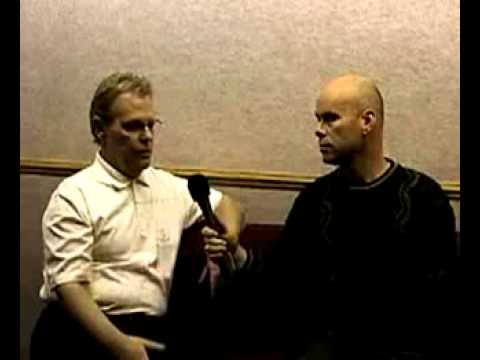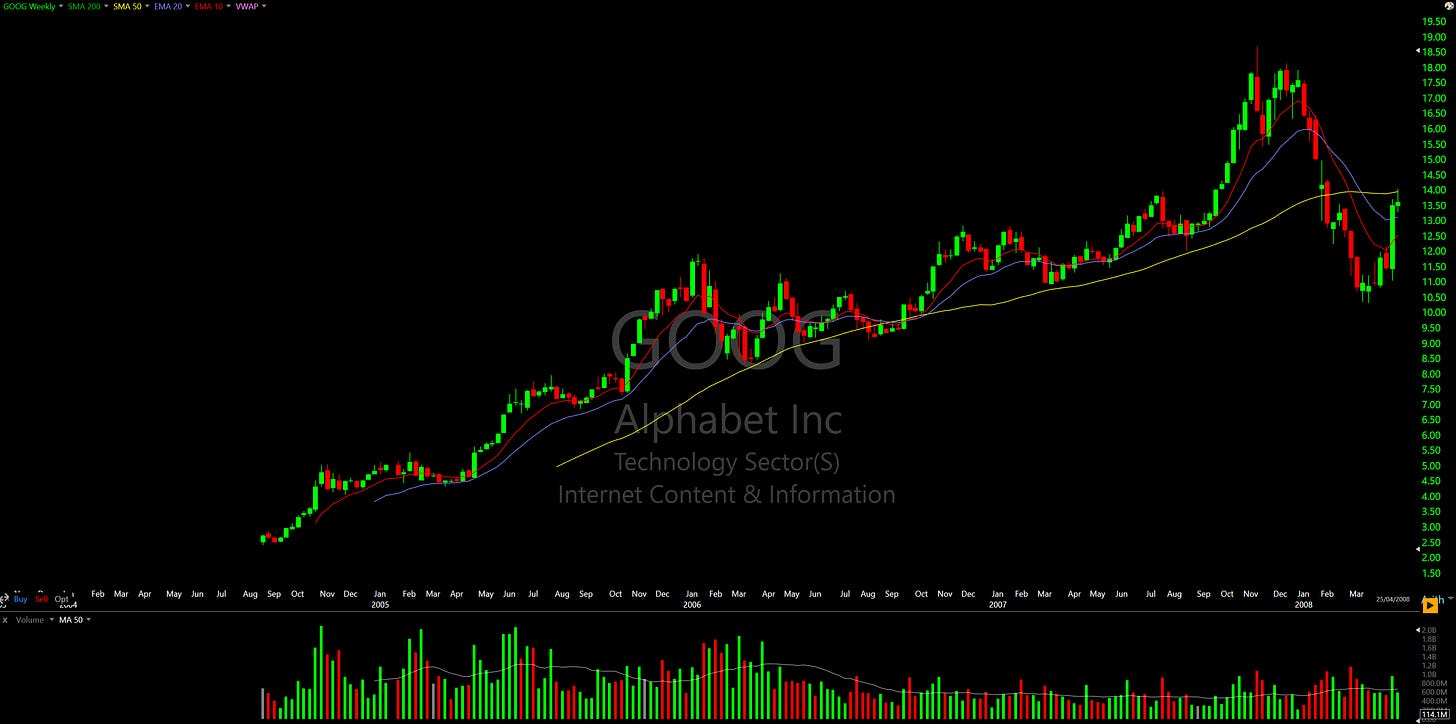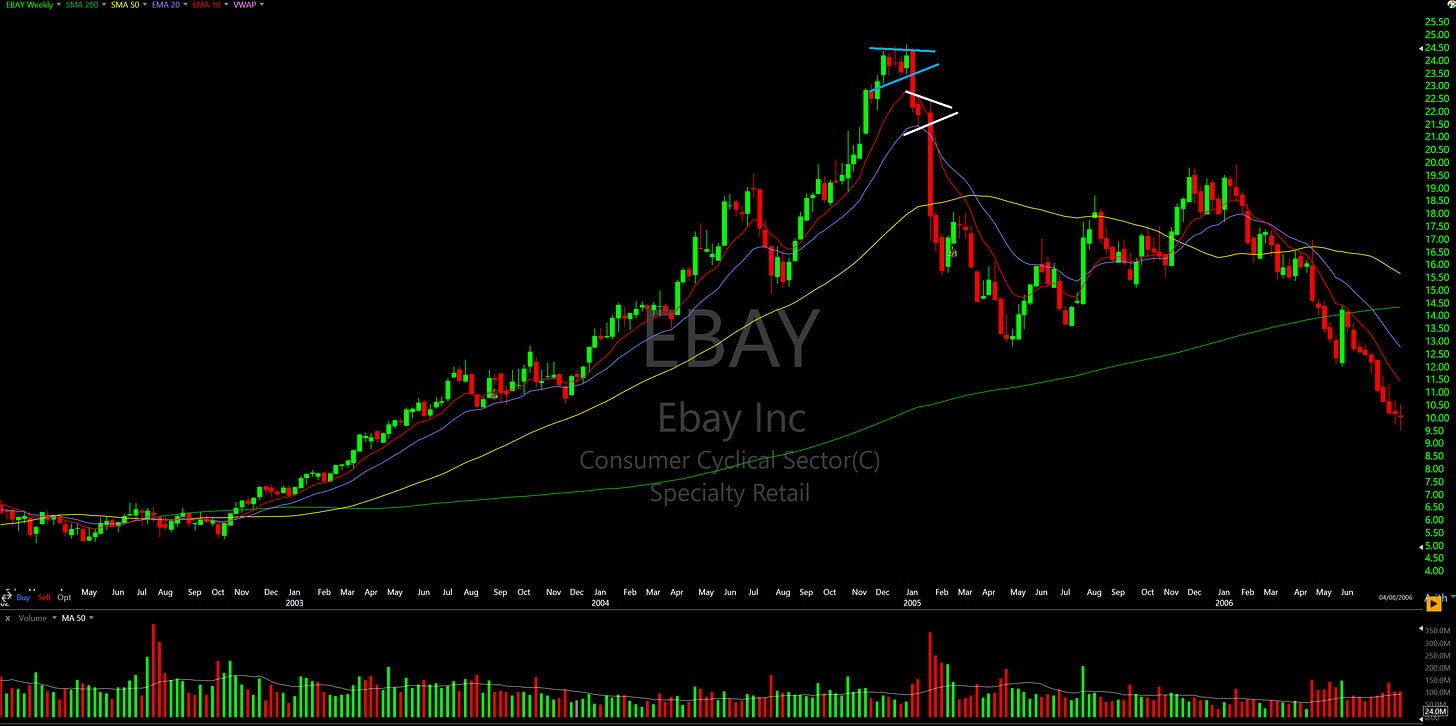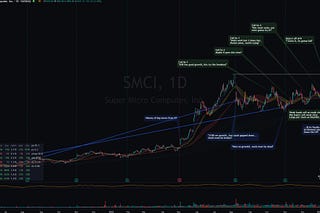

Discover more from The Trading Resource Hub
Dan Zanger (@DanZanger on X/Twitter) is the world record holder for the largest % gain in a personal portfolio over both a 12-month and an 18-month time period. So, when it comes to trading, the man clearly knows what he’s talking about.
So, I recently watched, and rewatched, an interview with Zanger from 2005. I’m not sure why I haven’t come across it before, but at least I have now.
I was really intrigued by how much value this interview had to offer, despite its age and its relative brevity. I therefore wanted to take notes to get more out of it, which I hope you find useful.
About my notes
As always, I recommend you listen to the full interview, and not rely on my notes alone, which only reflect my personal take-aways and musings.
You can find the interview on YouTube in three parts. My notes only account for parts 1 and 2, which I found the most useful.
Part 1:
Part 2:
Follow the institutions
From the interview, it’s very clear that the single-most important thing to Zanger is to follow the leaders.
Essentially, he wants to be in the stocks that the institutions want. And by ‘want’, I mean that the institutions aren’t afraid to literally pour hundreds of millions of dollars into a stock.
That’s the sort of power that enables stocks to make huge, multi-month (if not multi-year) moves.
Adapting CAN SLIM
A lot of what Zanger does is inspired by William O’Neil’s CAN SLIM formula, and this ‘follow the institutions’ mindset is typical of that.
Having said that, Zanger has adapted that formula to suit his personal style, particularly in terms of chart patterns, and how he enters and exits stocks.
Of course, this is a common theme among skilled traders. Many of them point to O’Neil or another trading great as the source of their inspiration, but the reality is that they cannot simply copy their mentor. They — and you too — must take the principles taught and adapt them to suit your own personality.
My suggestion: look at your journal
(If you just want to read my notes on the Zanger interview, skip to “How to find the leaders”.)
Considering that trading is hard enough as it is, I strongly suggest you don’t make it even harder by trying to become someone you’re not. Instead, take advantage of your unique strengths and personality.
There are many ways to make money in the market, but not all of those ways will work for you specifically. That’s why I’m a big fan of analysing your journal.
Your own numbers tell you the truth about your trading. I certainly consider it an efficient way of identifying where you might have an edge, as well as helping you develop conviction. (In addition to plenty of screen time and studying lots of charts, of course.)
I’ve already shared some personal breakthrough moments that came from analysing my journal, which you may find interesting or at least helpful to better appreciate why reviewing your trades is so important.
For example, realising that I was comfortably profitable in large caps at a time when my overall P&L was red was a huge boost to my confidence, plus it helped me be more selective about what stocks I trade (a huge factor in Zanger’s trading too, as we’ll see later).
Incidentally, at the time, I already knew the ‘best practice’ about being selective about the stocks you trade, but simply hearing that advice didn’t nearly have the same impact as seeing it in black and white from my own trading record.
Another key moment was when I discovered that I’m very good at entries. Specifically, I’ve never had a winner move more than 2% against me. I’ve since then always set a tight stop, without detriment to my strike rate, and with much more confidence that this is the right thing to do — for me.
This had a huge impact on my bottom line: not only did I lose less on my losers in % terms, but I was also able to trade with much bigger size, which helped me capture much bigger $ gains on my winners.
Obviously, I can’t tell you what you will find when you look into your own journal.
But I can’t recommend strongly enough that you do take the time to do really review your trades. Quite aside from my personal experience, many high-profile traders have told their own stories on how reviewing their trades permanently altered their results for the better, including David Ryan and Mark Minervini.
How to find the leaders
Back to Zanger’s interview. It’s all well and good to say you need to get into the leaders, but how do you find them?
Explosive volume
On a day-to-day basis, Zanger follows about 60 stocks on an eSignal quote window, without charts. Specifically, he looks for surges in volume and wants to see how the price responds to those surges.
The thinking behind this is that one of the biggest clues for institutions making their move lies in massive volume. And Zanger wants to make his move when the institutions make theirs (we’ll talk more about chart patterns later).
As Zanger said at 4:52 in part 2:
“I wanna go with the institutions when they go.”
To help identify these volume surges, Zanger uses the 20-day moving average for volume, and looks for relative volume of at least 300% — though, as is often the case for these things, higher is better. This is true for volume surges, but also for earnings growth.
Fundamentals: powerful earnings and a big, global product
Although Zanger relies more on technicals than on fundamentals in his trading (perhaps 70% vs 30%, but he has no fixed formula), he does consider fundamentals to be another important piece to the puzzle. In particular, he wants to see the stock have powerful earnings, as well as the company having a big, global product.
For earnings, Zanger wants them to be growing at a minimum of 50% — but again, the higher, the better. In the interview, he also specifically mentioned that he wouldn’t buy a stock that had earnings growth at just 25% or so, even if it had a good chart pattern, as he feels the stock has nowhere to go then.
He also wants the company to dominate its space at a global scale. That might mean that the company is selling a well-known product directly, or it might be producing a critical component for another company’s global product.
Both points boil down to, as Qullamaggie often puts it, not buying ‘random stocks’ (mostly in context of looking at the theme, but Qullamaggie does also look at earnings).
Zanger explained during this interview that technicals and fundamentals tend to go hand in hand. If a stock is making explosive moves, with good chart patterns, the underlying fundamentals are often good too.
In fairness, in recent years, we’ve seen a lot of stocks make huge moves without having any earnings, never mind good ones.
Nevertheless, as Qullamaggie pointed out during his Chat With Traders interview (from 2021), you need to know what’s fuelling the stock. What’s driving the move. Combining that information with technicals can significantly deepen your conviction and enhance your edge.
High-priced stocks
Zanger also mentioned that he never made money until he quit buying cheap stocks, and actually focused on buying the most expensive stocks in the market.
In fact, he described expensive stocks as probably the biggest money makers in the market.
To quote him from 14:20 of part 2:
“When these things get up and run, you can just plough your money into them. […] You’re going to be buying fewer shares, but you’re looking at your per cent.
“So, when Google [runs] from $200 to $300, that’s a 50% run. [And if] you’re on margin, you made 100% of your money.
“Now, if the stock turns and starts to break down, you may lose 3% or 4% of your money.
“So, your risk-reward ratio is enormous on the expensive stocks, and these are the real quality stocks that make huge runs, for long periods of time.”
Another reason people often like to concentrate on high-priced stocks is that these tend to be the more liquid names that institutions would actually consider buying.
Relatively young companies
Another important characteristic of big winners is that Zanger is looking for under-owned stocks. In practice, that often means looking for young companies and (relatively) recent IPOs. A good example of this, at the time of this interview (2005), was Google, which I’m covering in more detail below.
The idea is that institutions don’t yet own these names. If they do, you won’t get the buying pressure needed to have these stocks make explosive moves.
This is in sharp contrast to older, well-known stocks that have already played out their story. That have already saturated the market with their product.
In this interview, Zanger gave Cisco as an example. There’s no point owning such stocks anymore, as the boat’s already fully loaded on one side. Or in Zanger’s words: “You can’t give them away”.
The bottom line is that Zanger is looking for relatively new companies that dominate their space. The new global players that are changing the entire space they operate in — like Google and TASER in those days — and are forcing their competitors to try and catch up with them. Not the global players that have already changed their space, and everyone knows it.
The Google example
Google ($GOOG) was a huge winner for Zanger (2:41 of part 1):
“Google has been my big winner, and I’ve had an awful lot of my money in Google — an extraordinary amount of my money in Google.
“Basically, here’s a company that’s underknown, under-owned, but yet everybody uses Google for Search, revolutionising how they collect money for revenues — so much so other competitors are trying to play catch up.
“So that’s what you want: it’s someone who’s the dominant leader, earnings are explosive […] they’re up 100%, 120%, 140%, revenues are up 90%, 95%, 110%. Here’s a stock that’s underknown, that’s under-owned — institutions have to come in and start buying it. And as they buy it, it fuels the stock prices, the stock runs up. And […] CNBC and other stations do a great job of promoting the stock, that it’s overvalued, [which] brings in the short players. They just hear that it’s overvalued, so instead of them doing their homework, they’ll just pile in and be one of the short suckers that’s out there. That helps fuel the stock; as it races up, they do covering.
“So, it’s an ideal climate, the stock […] has been a major winner for me. I’ve been in [Google] on three big runs, and the money that I’ve made has just been gargantuan, to say the least. It’s really been huge.”
I feel the above quote explains the ‘fuel’ well:
Explosive earnings and revenue.
The dominant leader in its space, to the point it’s changing that field and forcing competitors to try and catch up.
A relatively recent IPO, so institutional ownership isn’t massive yet (i.e. the boat is far from being fully loaded on one side).
‘Short suckers’ who try to sell momentum and end up being forced to cover at a loss.
Position sizing
Another clear key to Zanger’s success, as evident from his Google example, is knowing when to size big.
During the interview, he mentioned that he goes 2:1 margin when a leader breaks out, then starts peeling back his position while letting the stock run — in other words, he sells into strength (presumably to pay for his risk), while trying to capture the bigger move on at least a portion of his position.
I think this is a good moment for an important reminder: each approach to trading requires its own trade-offs (for example, selling into strength means you sacrifice the chance of a home run, but going for home runs means low strike rates, and long and frequent losing streaks).
However, you don’t have to take an all-or-nothing approach. Selling in parts can often prove a good balance between paying for the risk while trying to capture big gains.
But even more importantly than this, if you’re aiming for superperformance, you have to know when to be a pig. When you’re truly running a hot hand, and the deck is stacked in your favour, you have to be able to press your luck. I’ve previously discussed this with a Druckenmiller lesson.
Clearly, Zanger knows this too, which is why he isn’t afraid to use margin when a leader breaks out. But it also takes experience and a lot of studying to really know when you can size big. As Qullamaggie explained in his Chat With Traders interview: you have to earn the right to use margin.
When to enter a stock
So, now that we’ve looked at how to find the leaders — or to put it differently, to select your stocks and compile your watchlist — let’s look at when to get into them.
Trade as little as possible
The first thing to emphasise is that you don’t want to be in the market all the time. In fact, Zanger said at 1:07 of part 2 that his biggest lesson from 2005 was to trade “far less” than he was doing at that time. This was both in terms of trade frequency and the number (universe) of stocks he was trading.
Zanger has found that the market may make only 2 big moves over the course of a year, each lasting maybe 6–12 weeks, maybe a bit longer, after which they tend to exhaust themselves. The rest of the time, the market’s simply consolidating the gains made.
Zanger wants to just be in (give or take) 4 powerhouse stocks that, after the market’s bottomed, have the potential to go on a huge run. Then, after the market exhausts itself, he can take his gains and go to cash while the market takes the necessary time (4–5 months) to set up again.
Market conditions
The natural follow-up to the previous paragraph is to understand the market you’re in, and be able to recognise when to take on risk and when to go to cash. Zanger isn’t just selective about what stocks he trades, but also about when he trades them.
Typically, he’s looking for an oversold market before he’d consider getting into a leading stock. He wants the market to appear to be bottoming and/or ready to take off.
So, what are some clues to this?
A big one is seeing leadership stocks at or near new highs, appearing to be waiting for a catalyst like a powerful new earnings report, while the overall market is cascading down. Like Zanger said at 2:50 of part 2:
“The market will lag these leading stocks. […] That’s why they’re known as ‘leaders’.”
So, Zanger watches four or five leaders, and waits for them to break out of a good base or pivot area, on powerful volume, before entering them. (More on chart patterns later.)
Importantly, Zanger doesn’t wait for the indices to take out a pivot point (or give another concrete signal), because they are a lagging indicator. If you wait for the indices, you’ll miss the leaders. What you really want to do is get into the stocks that are gapping up on earnings while the overall market is collapsing.
(I wrote about the same concept but in a different way in my notes on Qullamaggie’s Chat With Traders interview.)
Zanger also said that he plays to seasonality, taking into account which are strong and which are weak seasons, but didn’t really go into detail on this.
Chart patterns
As mentioned earlier, Zanger looks for certain chart patterns — basing areas — for a leading stock to break out, on huge volume, before entering. This type of entry tactic offers a good risk-to-reward ratio (though Zanger feels that the good ratio also comes from buying expensive stocks, as discussed earlier).
However, during this interview, he didn’t elaborate on the exact patterns. Fortunately, he does list the 11 most common chart patterns on his website:
Cup and handle
Flat base
Ascending triangle
Parabolic curve
Wedge formation
Channel formation
Symmetrical triangle
Descending triangle
Flags and pennants
Head and shoulders
Inverted head and shoulders
If you want to learn more about any (or all!) of these, then take a look at Zanger’s website, which has dedicated pages for each of these patterns, including images.
Going short
Zanger is mainly a long trader, for that is where the really big money is to be made: stocks can only go down 100%, but can go up several hundred, if not several thousand, per cent — TASER went up about 5,000% in about 18 months, for example.
(In addition, as Qullamaggie pointed out during a recent stream, shorting isn’t very scalable.)
That said, Dan Zanger has had some good short trades in his career. From 4:38 in part 1, he gives eBay ($EBAY) from January 2005 as a particularly notable example.
eBay’s earnings were rapidly decelerating, and it had broken down from a high-level channel (blue lines in the screenshot below), after which it created a bear flag (white lines). The fact the blue channel (base) was quite a short one was another clue to the stock’s weakness.
Dan Zanger noticed that the stock was starting to sell off on earnings day, so he started shorting the stock on that day, ending up with a position of -160,000 shares.
Then earnings came out, which were poor — eBay missed earnings, plus projected weak earnings going forward — so the stock gapped down nearly 20%, and Dan Zanger ended up with his (at the time) biggest single-day gain from just one stock: $3.2 million.
Passion for trading
The interviewer remarked at 7:35 of part 2 that Zanger seemed to have a pretty exciting vocation. Zanger’s response was:
“Well, I love it. Boy, I wouldn’t trade it in for world. Every day, it’s just absolutely thrilling, […] and every day is new, it’s exciting, filled with lots of spills and chills. But […] the rewards are absolutely phenomenal when you get it right.”
I’m sure we can all relate to that one. The rewards are great when you get it right, but to get to that point, it does take a lot of hard work and dedication — this is something we saw, for example, in Qullamaggie’s Stocksholm interview, but really, it’s pretty obvious in any trader who has ‘made it’.
Do your homework
Trading is a tough business. The only way to become consistently profitable is to excel in this field — which is by no means a prerequisite for faring well in almost any other profession.
I think that the only way that you’re realistically going to be putting in the long, hard hours to reach that level is if you’re truly passionate about the activity itself.
Here’s what Zanger said at 7:53 of part 2:
“It takes years and years and years and years of learning and hard work, and 15-hour days [with] a lot of ups, a lot of downs […] before you can get to put the whole package together.
[Later in the interview (10:03), Zanger mentioned putting in 8–12 hours on weekends, as well as 3–4 hours after his regular job.]
“But […] if you do the homework, you really study right, hard, long hours, you just stay focused. [And] get rid of all the stupid indicators out there, all this MACD stuff, and volume accumulation, and money flow. I don’t use any of it, it’s totally worthless. It’s price action, it’s volume, it’s chart patterns, it’s spectacular earnings. And that’s all there is.”
That final bit, once again, feels very close to what Qullamaggie is teaching us, many years after this Zanger interview was recorded.
Price and volume are Qullamaggie’s answer when asked whether he has a routine for identifying sector rotation. His entry tactics for episodic pivots (EPs) just focus on price and volume, with no need for “fancy indicators”, as he put it.
And there are plenty more examples of where Qullamaggie — and many other fantastic traders — focus on simplicity.
Zanger’s journey
Things took off for Zanger when the dot-com bubble hit. Until then, it was a “brutal” learning curve, with lots of ups and downs. He was “making money, losing it, making money, losing it again, and finally putting it all together”.
Having the right environment come along — for which he had the right style of trading, the right mentality and the right trading tools — played a huge role in that.
Just in case you weren’t convinced yet by how much market environment matters.
Risk real money and gain experience
Nevertheless, even if you really study a lot, you need to experience a few market cycles before you can truly understand the different market environments, and how to recognise and trade them — which, once again, is precisely what Qullamaggie (and other big traders) say too.
Furthermore, Zanger believes that you don’t really learn anything until you have a few bucks on the line — in other words, you must trade with real money.
That said, if you’re new to trading, Zanger recommends not putting too much money to work until you’ve gone through a few cycles. The market isn’t here to give you money, but to take it, so you must “learn to play with the pros”, as Zanger put it.
With all its pitfalls, “the market is designed to shake you out of your cash”. You can get in too late, sell too late, allow your emotions to get the better of you… You name it.
You’ve got to get your routine down first. Only then can you get in front of the institutions, which is ultimately ‘what the game is all about’, in Zanger’s view.
Zanger’s book recommendations
Zanger’s favourite trading book (in fact, he calls it his '“stock bible”) is How to Make Money in Stocks by O’Neil.
Zanger says he’s read the book cover to cover 6 or 7 times in his first 6 months of trading, then read selected chapters 30 times (or so) over the next 6 years.
He was “constantly hammering into [his] mind how to trade, what to trade, what [his] mistakes are. [And] after a while, it was just […] like the light really came on, [and he] started making incredible amounts of money.”
Zanger also praises Reminiscences of a Stock Operator about Jesse Livermore (but written by Edwin Lefevre). It’s a “quick, easy read” that teaches you when to get in and out of stocks, especially fast-moving stocks.
For Zanger, these are the only two trading books to have ever really had an impact on him. He considered other books just a lot of “fluff”. He says that if you only read these two books once or twice, and don’t re-read them, you better not lose your day job, because “you’re gonna need it”.
Rather, just take these two key books and read them over and over, so that when you are looking at things in real time, you can recognise the situation and know how to react. (Which is pretty much the same reason for needing to study lots and lots of charts.)
Admittedly, this interview was recorded in 2005, so before books like Trade Like a Stock Market Wizard and Think & Trade Like a Champion by Mark Minervini came out. Still, many of these better books published since 2005 are heavily inspired (or at least their authors are) by the Livermore and O’Neil classics, which supports Zanger’s views.
Either way, I think there is a very clear theme here that many greats (both in and outside of trading) teach: it’s better to constantly re-read a handful of excellent books than to read hundreds of mediocre books only once.
My concluding thoughts
One thing that really struck me about the interview was how Zanger spoke (as opposed to the things he actually said): very calmly and clearly, with a lot of confidence.
He clearly knows his system, and also obviously knows how to boil it down to the key principles. How to make it seem really simple — because to him, that’s precisely what it is, even if that belies all the years of hard work, studying and pain that went into it.
Those very principles are also precisely what makes the interview relevant even today, nearly two decades later.
Everything that Zanger said is, at its core, still true today. Because very little changes in the markets.
Sure, algorithms may create more noise, and some leaders don’t have growing earnings, just growing sales, but the principles remain — probably because the people behind the patterns and the decision-making processes don’t really change either.
So, what are some of the big lessons from this interview?
Find the most explosive movers in the market. Those are the leading stocks that can continue to make the biggest, sustained moves. (Note: this does not automatically mean that the stock is volatile — just that it can make huge and, preferably, clean moves.)
Linked to point 1, follow the institutions. Huge volume is the biggest clue for that.
Understand the market environment you’re in. There are only very limited periods in which the market is making big moves, and outside of those periods, it’s just consolidating the gains.
With point 3 in mind, be selective about when you trade, as well as what you trade.
Understand that to become successful in the markets, you need to be prepared to put in a huge amount of work and gain years of experience before you can “play with the pros”. That takes real passion for trading itself — not just the money that follows.
Learn from the greats — in particular, the core principles — but ultimately you need to find your own style that fits your personality.
Also bear in mind that the interview clearly doesn’t account for Zanger’s full system — for example, it doesn’t go into stop losses and other important risk management practices.
Nevertheless, I believe the interview holds a lot of value, which is why I spent quite a long time (I lost track of how many hours it was) rewatching it repeatedly and putting together the above notes.
Please do give this post a like and share it with other traders if you found it helpful. I’d also love it if you left a comment — complimentary or critical, I take all your feedback on board! I’m always looking to improve, both as a trader and writer :)
Alternatively, if you’re not comfortable leaving a public comment, you can always message me on X/Twitter or email me at kayklingson@yahoo.com.
More content like this
To get future posts like this straight to your inbox, why not subscribe? It’s free!
All my interview notes are available here.
The Trading Resource Hub’s full archive is here.

















Fantastic writeup
I wish Dan Zanger write book. Just one. I'll bring everywhere I go.